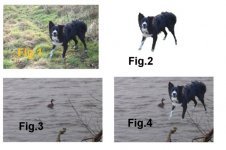Reader
Well-known member
How do you cut and past one image onto another photo?
Looking at Andy Brights Heron and Moon photo made me wonder just how you did this then Peter Hayes sent in a photo with the Glossy Ibis superimoposed onto a table. How do you do that?
How due you cut around the outline of a bird and paste only that part of a photo onto another photo?
The programmes I have on my PC are Adobe Photoshop 6.0
Paint Shop Pro 7
And Serif Photoplus 8.
How do you use these programmes to do it and which is the best one to use?
Looking at Andy Brights Heron and Moon photo made me wonder just how you did this then Peter Hayes sent in a photo with the Glossy Ibis superimoposed onto a table. How do you do that?
How due you cut around the outline of a bird and paste only that part of a photo onto another photo?
The programmes I have on my PC are Adobe Photoshop 6.0
Paint Shop Pro 7
And Serif Photoplus 8.
How do you use these programmes to do it and which is the best one to use?




